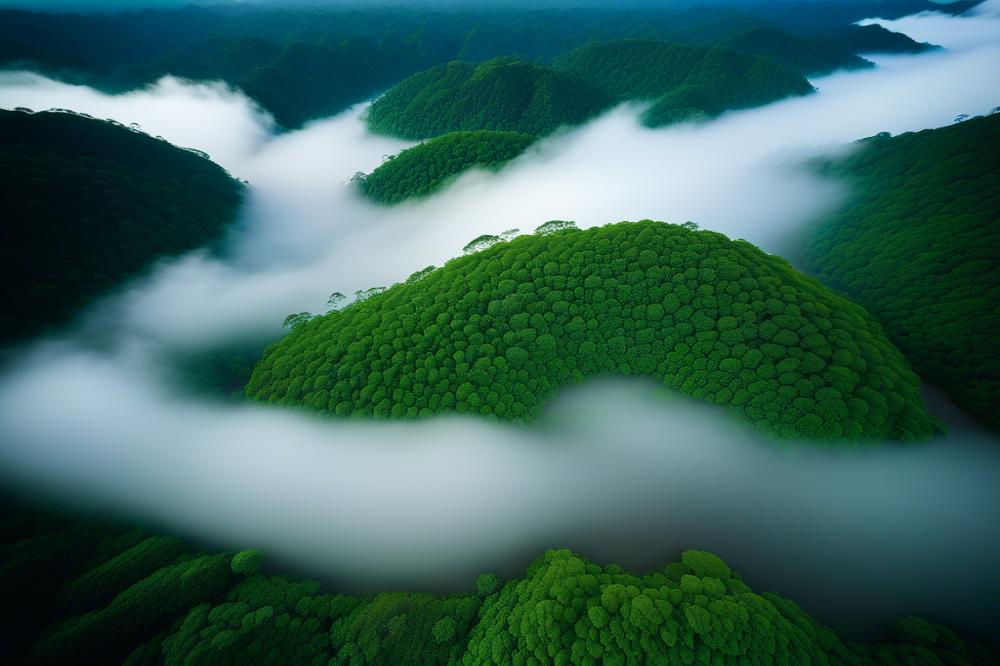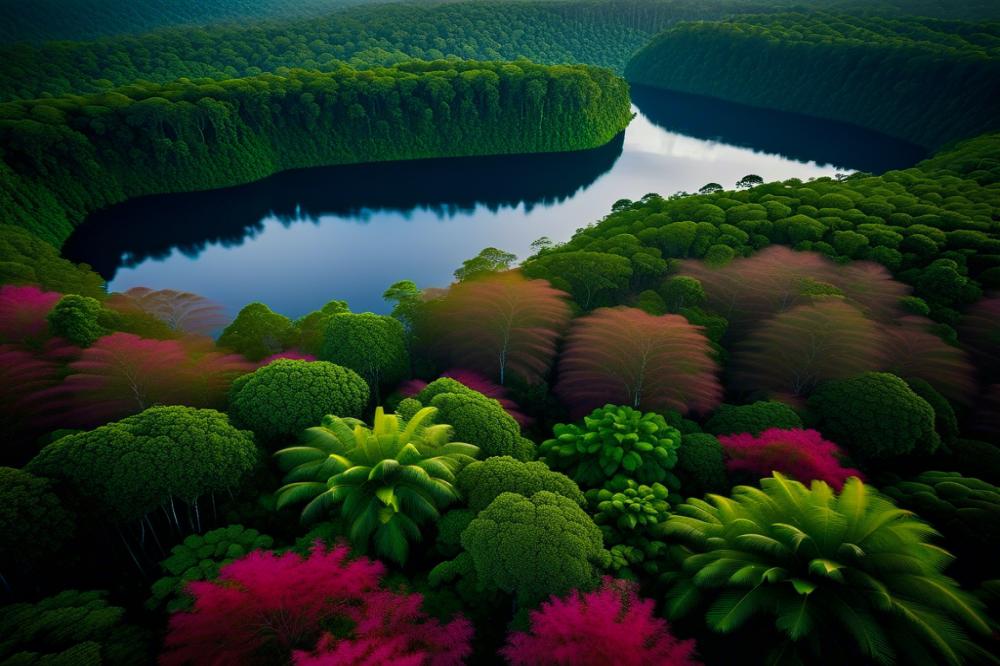Introduction
The rainforest in Papua New Guinea is a treasure trove of biodiversity, home to countless flora and fauna. This tropical paradise boasts a rich tapestry of life, making it a critical area for ecological study. Understanding these unique ecosystems is vital for preserving not just the wildlife, but also the intricate habitats that sustain them.
Exploring this environment illuminates the importance of conservation. Every species, whether large or small, plays a role in the broader ecosystem. Indigenous species often provide insights into evolutionary processes that have shaped the region over millions of years. Efforts to protect these areas help maintain the delicate balance within the ecosystem, supporting various plants and animals.
Tourism presents a double-edged sword for conservation. On one hand, visitors bring attention to the importance of preserving natural spaces. They support the local economy and often participate in eco-friendly initiatives. On the other hand, irresponsible tourism can lead to habitat destruction and wildlife disturbances. It is crucial for travelers and stakeholders to work together, promoting sustainable practices that benefit both nature and local communities.
In summary, the rainforests of Papua New Guinea are not just beautiful; they are vital for our planet. The complexity of their ecology demands our respect and protection. As we delve deeper into these unique ecosystems, we must remember our responsibility to safeguard them for future generations.
The Rich biodiversity of Papua New Guinea rainforest

In Papua New Guinea, diverse flora and fauna thrive in the lush greenery. This ecosystem is one of the most vibrant on the planet. Various plants and animals have adapted to the warm climate and abundant rainfall. As a result, many species exist nowhere else on Earth.
Highlighting indigenous species reveals just how special this region is. For instance, the Bird of Paradise captivates with its colorful feathers and unique mating displays. Equally fascinating are the countless varieties of orchids, many of which have not yet been classified. These plants and animals play vital roles in their habitat, contributing to the overall health of the environment.
Ecological Significance
The rainforest’s role extends beyond its borders. It acts as a crucial component of global biodiversity. By hosting such a wide array of wildlife, this region offers insights into the complexities of life itself. Preservation efforts are critical to maintaining the delicate balance of this ecosystem.
Moreover, the indigenous peoples of the area have long understood the importance of conservation. Their traditional knowledge about the ecology allows them to live sustainably within this vibrant habitat. In doing so, they help protect both the flora and fauna: a powerful interaction between humans and nature.
Maintaining this rich tapestry of life requires ongoing efforts. Climate change poses serious threats to the delicate ecosystems found in these tropical rainforests. As temperatures rise and weather patterns shift, many species face challenges to their survival. To combat these issues, local and global initiatives aim to safeguard this biodiversity.
Ecology and Habitat of Papua New Guinea rainforest

Understanding the rainforest ecosystem is vital for appreciating its intricacies. This lush environment hosts an astonishing variety of flora and fauna. Biodiversity thrives in the dense vegetation, allowing various species to interact in complex ways. These interactions form a web of life that supports stability within the ecosystem. Many plants and animals rely on each other for survival, creating a delicate balance.
Interactions Between Various Species
In tropical rainforests, wildlife coexists in remarkable harmony. Birds help pollinate the vibrant flowers while insects aid in decomposing organic matter. Indigenous species often find their niche, living in specific layers of the forest. For example, some creatures dwell in the canopy, while others prefer the forest floor. These different habitats offer food and protection, illustrating the coexistence of multiple life forms.
Predators and prey maintain the ecological balance. Without one, the other might overpopulate or diminish. Every organism plays a key role, from the tiniest insect to the largest mammal. Moreover, such intricate relationships contribute to the overall health of the rainforest. Each interaction reinforces the importance of preserving this rich habitat.
The Importance of Habitat Conservation
The conservation of this environment is paramount. Deforestation poses a significant threat to the existing wildlife. Climate change further exacerbates these issues, impacting the delicate relationships within the ecosystem. Protecting natural habitats ensures that ecosystems can remain functional. Preservation also allows indigenous species a place to thrive without the threat of extinction.
Efforts to conserve these areas need urgent attention. Preservation supports not only wildlife, but entire communities that depend on these resources. Education plays a crucial role in highlighting the significance of conservation initiatives. By recognizing the value of every species and the habitat they occupy, human activities can shift towards sustainability. In summary, safeguarding these unique ecosystems is essential for the future of our planet.
Wildlife Encounters in Papua New Guinea Rainforest

In the lush landscapes of Papua New Guinea, spotting exotic animals and birds feels like walking into a vibrant living tapestry. This region is home to some of the most diverse ecosystems on the planet. Visitors can encounter rare species such as the Birds of Paradise, known for their spectacular plumage and courtship displays. The sound of their calls fills the air, creating an orchestra of nature. Travelers also have the chance to see the elusive tree kangaroo, which leaps silently among the branches.
Many wildlife experiences offer a glimpse into the lives of these creatures. Guided tours led by local experts can uncover aspects of wildlife behavior that leave visitors in awe. Observing animals in their natural habitat allows for a deeper understanding of ecology and conservation efforts. Travelers might also come across fascinating reptiles and brightly colored insects unique to this tropical rainforest. This experience isn’t just recreational; it’s a chance to connect with nature.
The Significance of Wildlife in Ecological Balance
Wildlife plays a crucial role in maintaining ecological balance. Each animal, from the smallest insect to the largest bird, contributes to the rich biodiversity of the forest. Flora and fauna depend on each other for survival in an intricate web of life. For instance, fruit bats pollinate flowers as they feed, which promotes plant growth. This interdependence highlights the importance of conservation. Protecting habitats ensures that these indigenous species thrive for generations to come.
The impact of climate change further complicates this relationship. Rising temperatures can alter habitats, pushing wildlife to adapt or migrate. Conservation efforts focus on preserving these unique ecosystems, which are vital not only for the species residing there but also for global biodiversity. As travelers engage with this natural world, they become part of a larger story—one that stresses the need for both protection and appreciation of these extraordinary environments.
The Climate of Papua New Guinea Rainforest

Effects of Tropical Climate on Biodiversity
Tropical climates play a crucial role in shaping biodiversity. Warm temperatures and high humidity create favorable conditions for a wide variety of flora and fauna. Papua New Guinea’s rainforest hosts thousands of indigenous species found nowhere else on Earth. These unique plants and animals have adapted to specific microclimates within the larger ecosystem. Dense canopies allow life to thrive at multiple levels, creating an intricate web of ecological relationships. Biodiversity is not just abundant here; it is essential for the stability of ecosystems.
Seasonal Variations and Their Impact on Ecosystems
Rainfall patterns vary throughout the year, affecting habitat conditions. Wet seasons bring heavy rains, nourishing plants and replenishing water sources. Meanwhile, dry periods can stress certain plant species, making them more susceptible to disease. Wildlife also follows these seasonal patterns; many animals adapt by migrating or changing their feeding habits. These cycles are critical, as they help maintain the balance of species within the rainforest. Ecological interactions during different seasons can lead to changes in population dynamics, influencing which species thrive or struggle.
Climate Change Challenges Faced by the Rainforest
Challenges posed by climate change are increasingly alarming. Rising temperatures can alter rainfall patterns, disrupting established ecosystems. Some species may not be able to adapt quickly enough, leading to potential extinctions. Conservation efforts are necessary to protect fragile habitats from further degradation. The unique wildlife of the rainforest is at risk as global conditions shift. Threats such as habitat loss and changes in local climates compound the difficulties faced by these ecosystems. Urgent action is needed to address these issues and secure a stable future for Papua New Guinea’s rich biodiversity.
Conservation Efforts and Eco-Tourism
Initiatives for preserving the rainforest ecosystems
Papua New Guinea is home to rich biodiversity. This includes numerous indigenous species, many of which cannot be found anywhere else on Earth. Various organizations are working hard to preserve these tropical rainforests. Partnerships between local communities and global conservation groups play a crucial role. These alliances focus on protecting natural habitats and promoting sustainable practices. They aim to reduce deforestation and support the ecology of the region. Education is also a vital part of these efforts. Informed communities can better guard their environments against threats.
Role of sustainable travel in conservation
Sustainable travel helps in many ways. Tourists can provide a much-needed income to local communities. When visitors spend money on eco-friendly tours, they support conservation initiatives. This financial boost encourages locals to protect their natural surroundings. Wildlife thrives when people see its value. Many travelers seek experiences that connect them with nature, especially in rich ecosystems. This desire for authentic adventures fosters a culture of respect for the environment. Tour companies are increasingly promoting practices that minimize ecological impact. These practices help maintain the delicate balance of flora and fauna in their habitats.
Encouraging responsible tourism practices
Responsible tourism begins with awareness. Educated travelers are more likely to make choices that benefit both people and wildlife. They might choose not to disturb animals or pick plants. Simple actions can make a significant difference. Tourists should also understand the local culture and traditions. Engaging with Indigenous communities can provide invaluable insights into the region’s ecological practices. Respecting wildlife and natural resources shapes a more sustainable future. As the climate changes, maintaining a healthy environment becomes more urgent. Every effort contributes to preserving the rainforests for generations to come.
Final Thoughts on the Importance of Papua New Guinea’s Rainforest
The rainforest of Papua New Guinea is a treasure trove of biodiversity. This lush environment supports countless species, many of which cannot be found anywhere else on Earth. Its ecosystems provide vital resources for local communities and are essential for the planet’s health. Without action, these irreplaceable habitats are under constant threat from logging and climate change.
Travelers have a chance to witness this remarkable landscape firsthand. Engaging with local cultures while exploring the rainforest can be both educational and transformative. Every visit can inspire a deeper appreciation for nature’s complexity. Such experiences can stimulate interest in conservation efforts, encouraging people to protect these areas, not just for future generations but for the wellbeing of our world.
Meanwhile, conservationists are faced with the important task of safeguarding these environments. Their work is critical for maintaining the delicate balance within these ecosystems. Collaboration with local communities amplifies the impact of their initiatives. By uniting efforts, it’s possible to create effective strategies that benefit both wildlife and people.
Exploration and preservation go hand in hand. The more we learn about these ecosystems, the better equipped we will be to protect them. Individuals can contribute by supporting responsible tourism and conservation organizations. Every little action counts in the overarching goal of protecting what remains of these vibrant habitats.
In conclusion, as we reflect upon the significance of this rich rainforest, the message is clear. Together, travelers and conservationists can play a pivotal role in preserving the extraordinary natural world that exists in Papua New Guinea.



